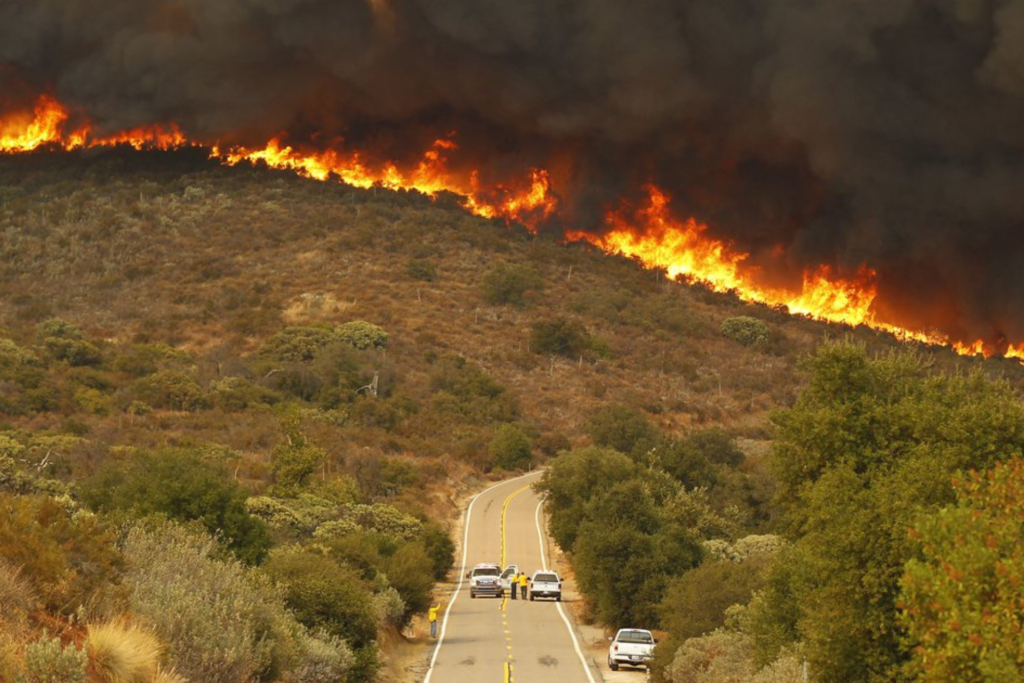The decision has been in motion since 2022, as confirmed by the State Regulator, and sees CSE join major carriers State Farm, Allstate, Farmers, USAA, and Kemper who have all exited the State in recent months.
Berkshire Hathaway’s AmGUARD as well as Falls Lake Fire & Casualty announced they were pulling out of the state’s beleaguered home insurance sector in August. The move resulted in more than 50,000 homeowners losing their coverage from these two insurers alone.
Oregon-headquartered CSE conveyed its intent to agents, notifying them that it would cease providing quotes for all California policies effective October 9. As disclosed in a message shared with the North Bay Business Journal, CSE Insurance Group stated that letters would be issued to policyholders, notifying them that automobile coverage would not be renewed if it expired on or after November 17. Renewals for all other policies set to expire on January 1 would also be terminated.
California’s residents face further insurance challenges
Acknowledging the potential impact on policyholders, the company expressed its commitment to assisting brokerages in identifying alternative coverage options.
While CSE represents a relatively small share in the state, accounting for only 0.4% of the homeowners market and 0.2% of the auto market, according to the California Department of Insurance (CDI), its withdrawal follows a series of departures by major carriers.
Beyond the inherent challenges posed by California’s elevated natural catastrophe risks, other factors contribute significantly to the turbulence in the state’s insurance market. A substantial force in this regard is inflation, particularly its impact on construction material and labor costs. The resultant increase in claims costs is a key factor leading to higher rates.
Bill Martin, President, and CEO of Plymouth Rock Home Assurance, told PC360 recently that repair costs have surged by as much as 40% for certain claims, underscoring the profound influence of inflation on the dynamics of the insurance landscape.
He said: “Natural catastrophes might be a bit of a catalyst, but they are not the only thing playing on insurers. The truth is that post-pandemic inflation would have happened with or without catastrophes. The catastrophes only exacerbate them because they create a kind of demand surge in addition to the supply chain issues and labor market challenges that are driving increases.”
He continued: “Something that might have been resolved in three to six months could now take a year or more to get repairs. And usually until the actual construction or repair is made, you don’t know for sure if you have the cost right because there might be difficulty in getting certain materials. Then you have another year of inflation on top of it, so the severity is wreaking havoc.”
Cost of wildfires equate to 2-4% US GDP
A recent report released by Senator Martin Heinrich (D-NM), who serves as the Chairman of the US Congress Joint Economic Committee (JEC), has brought to light the staggering economic impact of climate-exacerbated wildfires on the United States. The estimated cost ranges from $394 billion to $893 billion annually, significantly surpassing previous assessments.
The figures outlined in the report, authored by the JEC Democratic Majority, indicate that the economic damages, falling within the range of $394 billion to $893 billion, equate to 2-4% of the US Gross Domestic Product (GDP). This range stands notably higher than earlier estimates, which, based on a more limited set of costs, projected the total annual cost of wildfires to be between $87.4 billion and $427.8 billion in 2022 dollars.
It’s essential to note that the economic costs encompass various factors, including insurance payouts, increases in insurance premiums, depreciation of real estate values, income loss, damage to property and infrastructure, electricity costs, evacuation expenses, federal wildfire suppression costs, tourism decline, and a myriad of other contributing elements.
These findings underscore the escalating economic toll of climate-induced wildfires on the nation, urging a comprehensive approach to address the multifaceted impacts and costs associated with these increasingly frequent and severe events.
Negotiations may bring relief – but at a high cost to the customer
Insurance commissioner Ricardo Lara had recently announced reform plans to address California’s insurance challenges, including changes to the state-run FAIR Plan and negotiations with insurers to facilitate a smoother transition for policyholders.
Some providers are also attempting a negotiated return or remain. According to a report by the LA Times, the insurer, Lara, has potentially agreed to re-enter the high-risk fire zones situated in the hills and canyons of California. In exchange, they have secured several concessions designed to expedite the process of obtaining higher rate increases through the state regulator. This development follows the breakdown of negotiations in Sacramento regarding a legislative response to challenges in the home insurance market.
California’s Governor Gavin Newsom also issued an executive order, directing the insurance commissioner to swiftly implement regulatory measures to fortify and stabilise California’s marketplace. Consideration is also being given to the possibility of emergency actions.
While these changes are slated to take effect by the end of 2024, there is optimism that insurers will resume writing new homeowners policies in California before then. Major insurers, including State Farm, USAA, and Allstate, have rate increase requests pending with the state insurance department. These requests seek hikes of 28.1%, 30.6%, and 39.6%, respectively.
If approved, each company would be permitted to raise its total premiums in the state by the specified percentage. However, the impact of the rate increase could vary among homeowners, with properties like a cabin in the woods potentially experiencing a 200% surge, while homes in urban areas like San Francisco might see little to no change.
No swift resolution for California’s high risk residents
State officials said that CSE’s decision should not be interpreted as a failure of recent efforts to maintain insurance options.
Michael Soller, spokesperson for CDI, revealed, “CSE informed the department last year of plans to leave the market while providing a soft landing for policyholders with a comparable policy. CSE informed the department last year of plans to leave the market while providing a soft landing for policyholders with a comparable policy.”
He added: “We are working on the rate filings that will help transition policyholders with as little disruption as possible.”
Author: Joanna England








